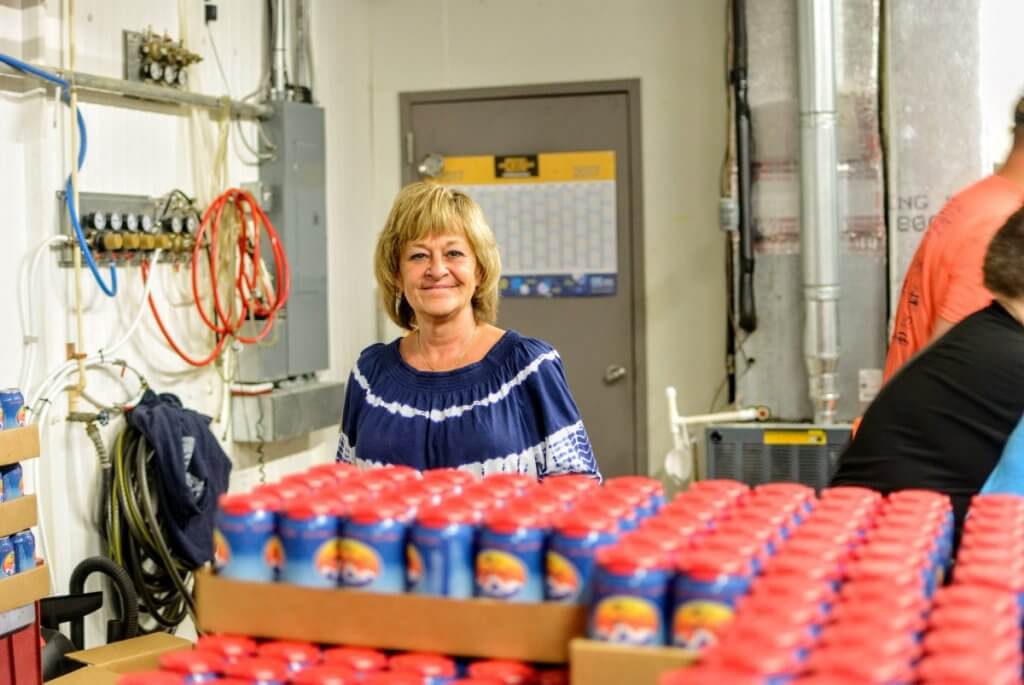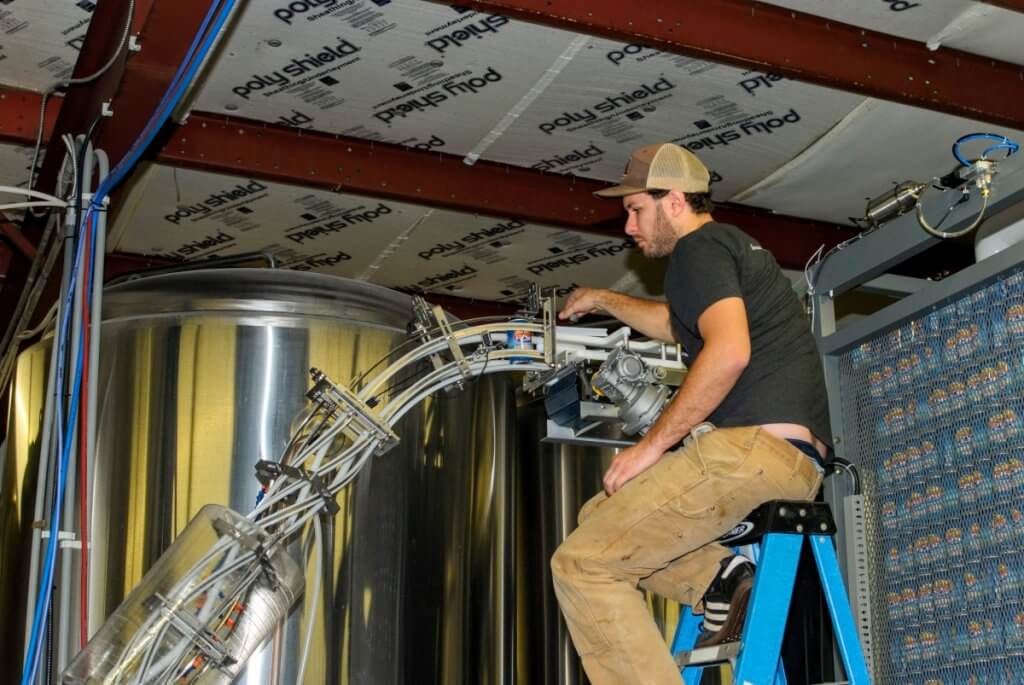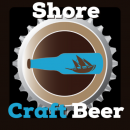Canning day at 3rd Wave Brewing in Delaware is a big deal
I popped into 3rd Wave one random afternoon recently to check on the canning line’s progress. Lori Clough, one of the owners, let me know I was about 24 hours too early. The line had arrived a few days before and the assembly process still was underway, but she took me into the brewery to get a look at the process.
Drew Watts, the representative from Wild Goose Canning, was tinkering with the packing line. He had flown in from Colorado to help install and run the first few batches. He spends a lot of time on the road installing these machines, because canning increasingly is a thing both on the shore and in the country. Wild Goose has systems in Mispillion River Brewing, RAR and Burley Oak, which was one of the selling points for Lori.
Many of the breweries in the area already work together pretty well, so knowing other people who have the same machines and have overcome any of the challenges they bring is a built-in benefit. Lori told me to come back in the morning and the machine would be up and running.

Getting ready for a day of canning
When I returned at 10 a.m., Drew and John Panasiewicz, the head brewer at 3rd Wave, had the machine up and running. They were pumping cleaning solution through the works. Sanitation is one of the most important parts of brewing and these guys take it seriously. One slip up can ruin hundreds of gallons of beer before it even is detected, and every step in the brewing process brings with it another chance for the beer to be infected with microorganisms that will make it taste funny.
It was slow going at first. After you clean the lines with chemicals, you have to clean them with beer. Lori said that they run between two and four cases worth of beer through the machine before they start canning, just to make certain all of the cleaner is out of the lines and it is populated exclusively by beer.

The world’s tastiest rollercoaster
The canning line works like a rollercoaster, at least a little bit. A pallet of cans is loaded onto an elevator and raised slowly. At the top of the elevator, the cans roll, one by one, onto a track that spins them down and places them on a conveyor belt. From there, it runs through to the filler where four cans at a time get topped off before having the lids applied and sealed.From there one volunteer pulls the filled cans off the line and another one snaps the six-pack rings on top.
The best thing about canning day is there is a genuine glee in the process. Even though it might look a little monotonous from the outside, it is actually a kind of break from the routine at 3rd Wave. Maybe the shine eventually will come off, but it doesn’t seem likely.
The new canning program
Canning isn’t new at 3rd Wave, the company has been using a mobile canning service for some time. Installing their own, though it was a serious investment, means they can can more beer more often and in greater variety. The Wild Goose line can produce something on the order of 400 cases in a canning day. Lori said they may can between two and three days per week, depending upon demand.
They’ve started ShoreBreak, their Pale Ale, but will be canning Sandstorm, Beach Juice, and Sunset Peach in the coming weeks. And that just is the beginning. Lori said 3rd Wave is expanding into new markets. They’ll be on the Jersey Shore before too long and have had other regions calling to see about arranging distribution around the region. The cans certainly will help make that transition a little easier.
3rd Wave will hold its first major can release party in June, subscribe to our newsletter to be kept up to date on the details.




